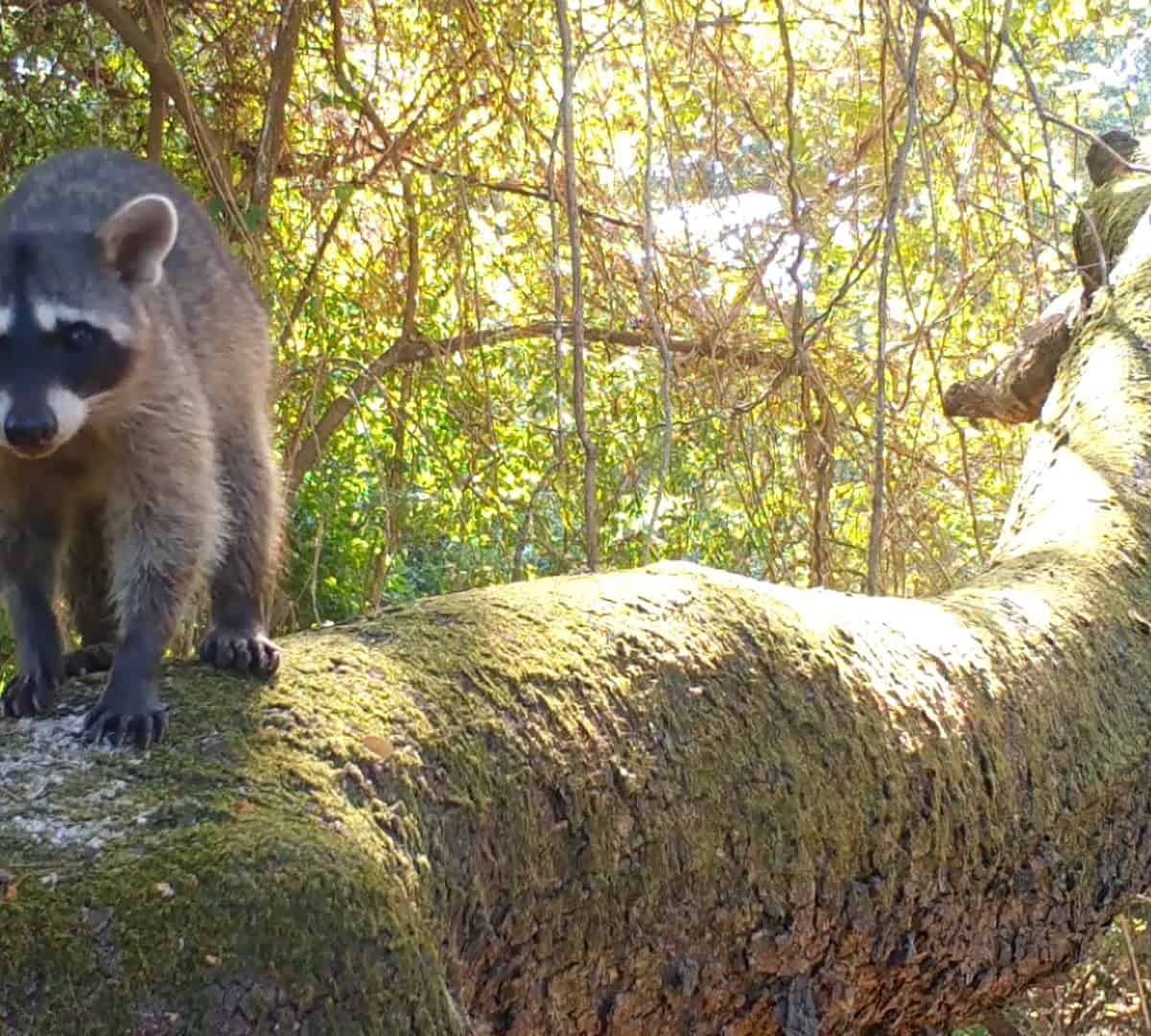Familiarity sometimes breeds disinterest. Yes, the Tico version of this raccoon is the same species of trashcan-bandit that lives in the US and Canada, but just because you recognize it doesn’t mean it’s not interesting. So sit back and let me tell you about the Northern Raccoon.
Let’s start with the names. In English, it’s the Northern Raccoon which makes sense because it ranges from southern Canada to about halfway down Panama. The scientific name used to be Ursus lotor, which loosely translates to washing bear because it was incorrectly grouped with bears and was seen washing its food before eating it.
The current scientific name is Procyon lotor (they ditched the bear part). In Spanish the two names I’ve come across are mapache (ma pa chey) and mapachín (ma pa cheen), which are both fun to say.
On average, Tico Northern Raccoons are smaller than their counterparts in the US and Canada. In Costa Rica, adults weigh about 4 kilograms or 9 pounds. The numbers vary depending on the source, but up north they range from 14 to 23 pounds. One source had the top end of the range at 57 pounds, which would be terrifying.
Northern Raccoons are one of two raccoon species in Costa Rica. The other is the Crab-eating Raccoon. The Northern Raccoon ranges throughout the whole country and overlaps with the Crab-eating Raccoon’s range which is on the Pacific coast, approximately from Orotina down to Osa. We’ll get to know the Crab-eating Raccoon another day.
They are mostly nocturnal, though it isn’t terribly uncommon to catch a glimpse of one during the day. Their diet is extremely varied. They eat fish, frogs, insects, crabs, worms, nuts, and fruit. They also have a taste for bird and turtle eggs. The raccoons that scavenge the beaches at Camaronal Wildlife Refuge, on the Pacific coast near Sámara, had such a hunger for sea turtle eggs that they were continuously breaking into the nursery at night and chowing down on all the future sea turtles.
In response, the park rangers installed a little electric fence to keep them out. The raccoons laughed at the fence, took a flying leap over it, and continued their feasting. A more robust solar-powered electric mesh fence finally convinced them to look for food elsewhere.
Northern Raccoons are common in Costa Rica. You can find them at the beach, in the forest, in small towns and in big cities. They were also a common animal at the wildlife rehabilitation center where I worked for a few years. We’d frequently receive a cardboard box full of chirping juvenile raccoons.
I became quite adept at putting on a hooded camouflage suit and bottle-feeding a cageful of tiny raccoons with visual barriers, so they never saw my face and didn’t associate people with food.
I record Northern Raccoons frequently with my camera traps. They are particularly prevalent in estuaries and along beaches. They also excel at grabbing the last crabs, crayfish and fish that become trapped in puddles as the streams and rivers dry up in Guanacaste during dry season. Take a look at the video below and meet the Northern Raccoon.
About The Author
Vincent Losasso, founder of Guanacaste Wildlife Monitoring, is a biologist who works with camera traps throughout Costa Rica. Learn more about his projects at: Instagram and facebook or by email.

